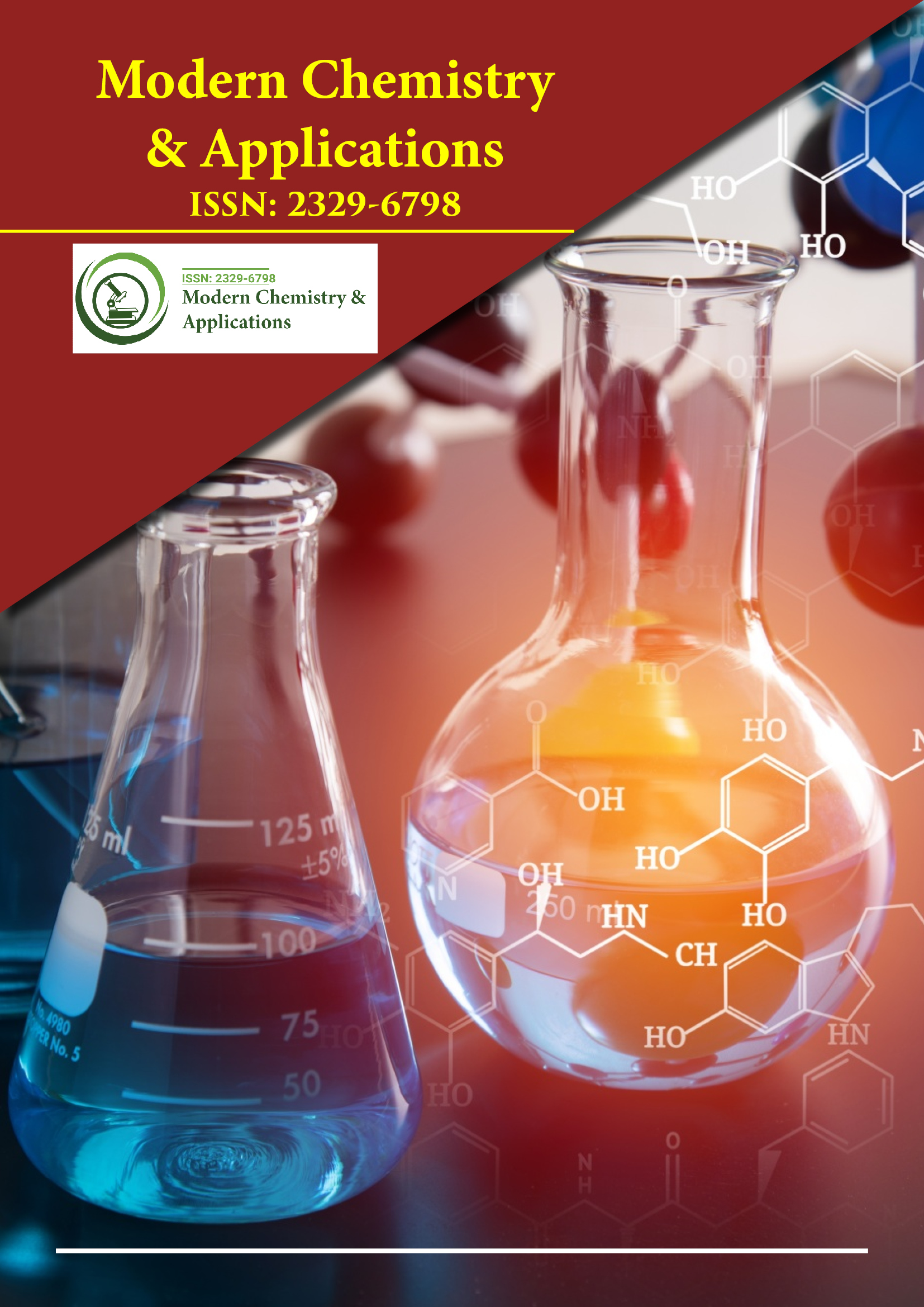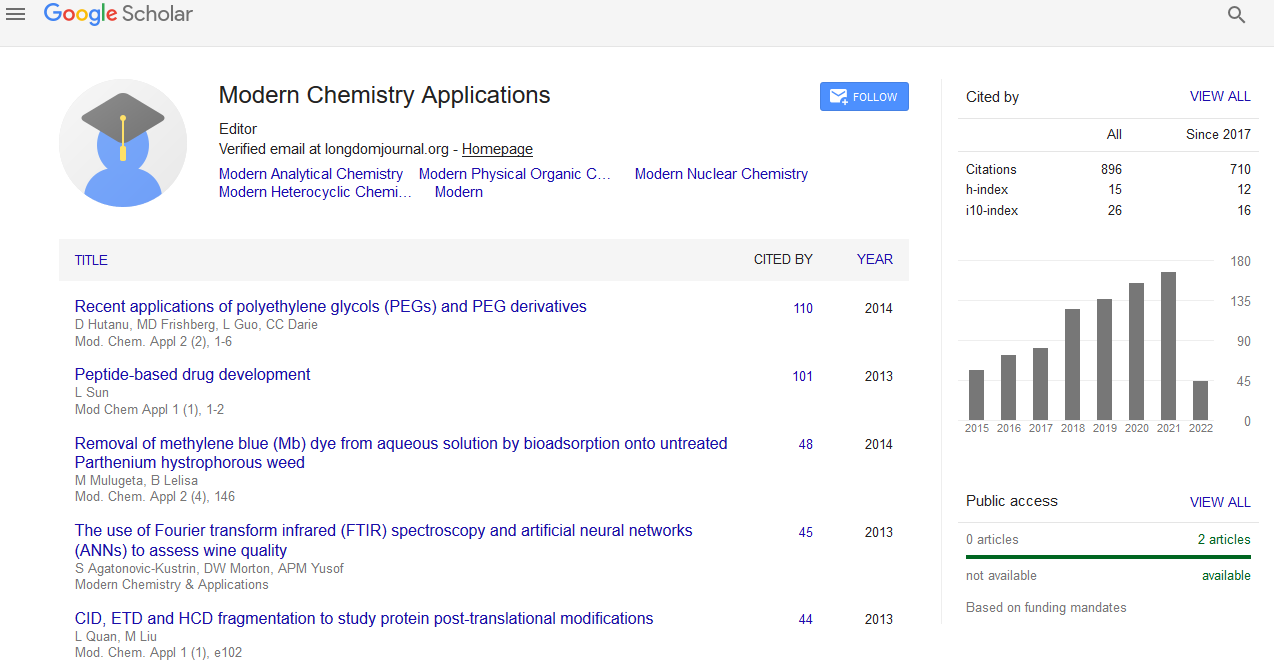Indexed In
- Open J Gate
- JournalTOCs
- RefSeek
- Hamdard University
- EBSCO A-Z
- OCLC- WorldCat
- Scholarsteer
- Publons
- Geneva Foundation for Medical Education and Research
- Google Scholar
Useful Links
Share This Page
Journal Flyer

Open Access Journals
- Agri and Aquaculture
- Biochemistry
- Bioinformatics & Systems Biology
- Business & Management
- Chemistry
- Clinical Sciences
- Engineering
- Food & Nutrition
- General Science
- Genetics & Molecular Biology
- Immunology & Microbiology
- Medical Sciences
- Neuroscience & Psychology
- Nursing & Health Care
- Pharmaceutical Sciences
Editorial - (2021) Volume 9, Issue 12
Editorial Note on Chalcone
Sathvik Arava*Received: 06-Dec-2021 Published: 20-Dec-2021
Abstract
Chalcone as an anticancer drug Chalcones are a group of plant polyphenol compounds belonging to the flavonoid family. Studies have shown that some chalcones have a variety of cellular protective and regulatory functions that may have therapeutic potential in multiple diseases. Their physicochemical properties seem to determine the degree of their biological activity.
Editorial
Chalcone as an anticancer drug Chalcones are a group of plant polyphenol compounds belonging to the flavonoid family. Studies have shown that some chalcones have a variety of cellular protective and regulatory functions that may have therapeutic potential in multiple diseases. Their physicochemical properties seem to determine the degree of their biological activity
Chalcones, fragrant ketones and enones, are acknowledged for his or her anticancer effects. Although figure chalcones encompass fragrant jewelry joined via way of means of a three-carbon α,βunsaturated carbonyl system, numerous artificial compounds owning heterocyclic jewelry like pyrazole, indole, etc., are widely recognized and proved to be powerful anticancer marketers. In addition to their use as anticancer marketers in most cancers mobileular lines, heterocyclic analogues are suggested to be powerful even towards resistant mobileular lines. Some of the maximum full-size chalcones diagnosed from those flowers consist of flavokawin, butein, xanthoangelol, 4-hydroxyderricin, cardamonin, 2′, 4′-dihydroxychalcone, isoliquiritigenin, isosalipurposide, and naringenin chalcone. These chalcones had been related with immunomodulation, antibacterial, antiviral, anti-inflammatory, antioxidant, and anticancer activities.
A complete synopsis of latest patent literature (2005–2011) for chalcones and their derivatives on decided on activities (e.g., anti-inflammatory, antimitotic, cytotoxic, antioxidant, and anticarcinogenic) has been supplied in a 2011 review. The reviewers have accumulated maximum of the current papers and patents on herbal and artificial chalcones and their derivatives that confirmed promising anti-inflammatory and anticancer activities. Some of the maximum promising chalcones are going to be examined in destiny scientific trials for his or her anticancer healing utility. The anticancer pastime of chalcones has been evaluated in affiliation with unique functions in their chemical systems.
Chalcones are a group of plant polyphenol compounds with various biological activities. Based on the chalcone skeleton, several lead compounds with different pharmacological properties have been developed. The beneficial effects of these substances have been studied in the context of diabetes mellitus. In this context, these molecules are attractive substances that can enrich current treatment options and are of great interest from both academia and industry. The purpose of this review is to discuss recent developments in chalcone chemistry and efficacy, especially in relation to their role in glucose homeostasis and carbohydrate metabolism. A new approach to study carcon interactions at specific targets that combines incilico (computer modeling) and β-cell in vitro pharmacological studies, taking into account the relationship between the relevant structure and activity of these compounds. Development challenges future prospects by characterizing molecular targets for the treatment of diabetes.
Chalcones are α, β-unsaturated ketones (trans1, 3-diary-l2-propene 1 on) consisting of two aromatic rings (A and B) linked by an α, β-unsaturated carbonyl system with various substituents It is a biosynthetic product of plants synthesized via the shikimate pathway. As precursors to flavonoids, they are thought to be open-chain flavonoids that are abundant in edible plants. Many biologically important heterocycles such as 1, 4-diketone, benzothiazepine, flavones and pyrazolines can be synthesized using chalcones as the primary precursor. The two rings A and B bound by the α, β-unsaturated carbonyl system are unique features of chalcones as other anti-diabetes drugs do not have this type of binding. The bright yellow chalcone found in many plants and some families contributes significantly to the pigmentation of the corolla. Chalcones can be synthesized in the laboratory by aldol condensation between benzaldehyde and acetophenone in the presence of a base
Citation: Arava S (2021) Editorial Note on Chalcone. J Mod Chem App. 10:342.
Copyright: © 2021 Arava S. This is an open-access article distributed under the terms of the Creative Commons Attribution License, which permits unrestricted use, distribution, and reproduction in any medium, provided the original author and source are credited.


